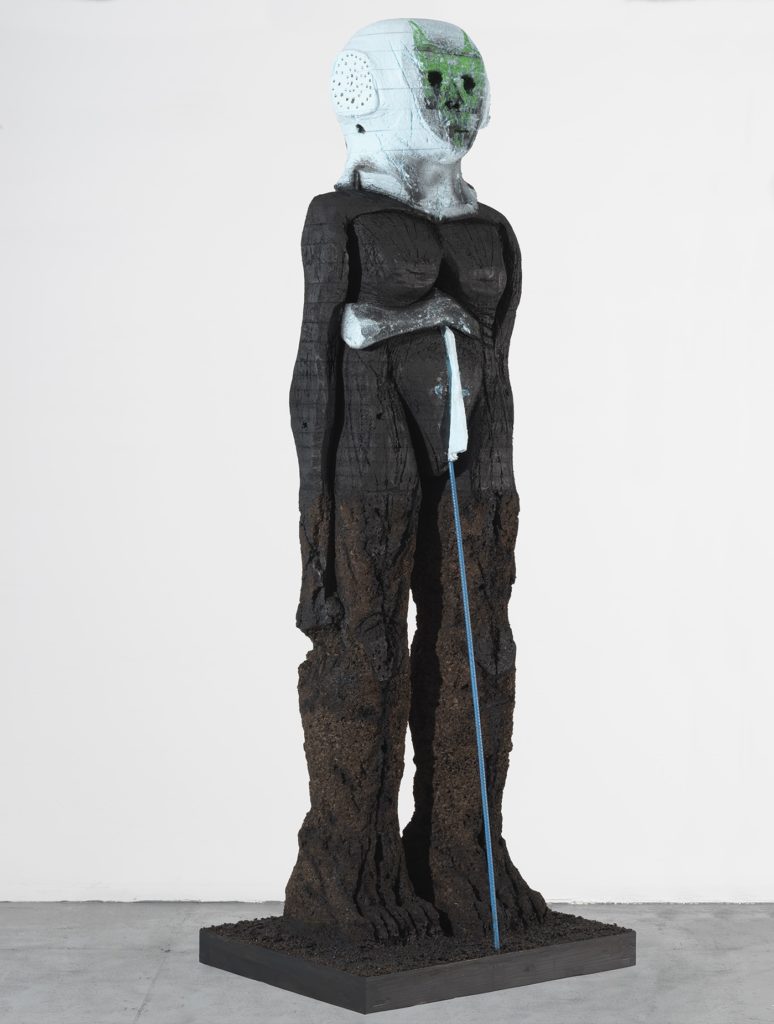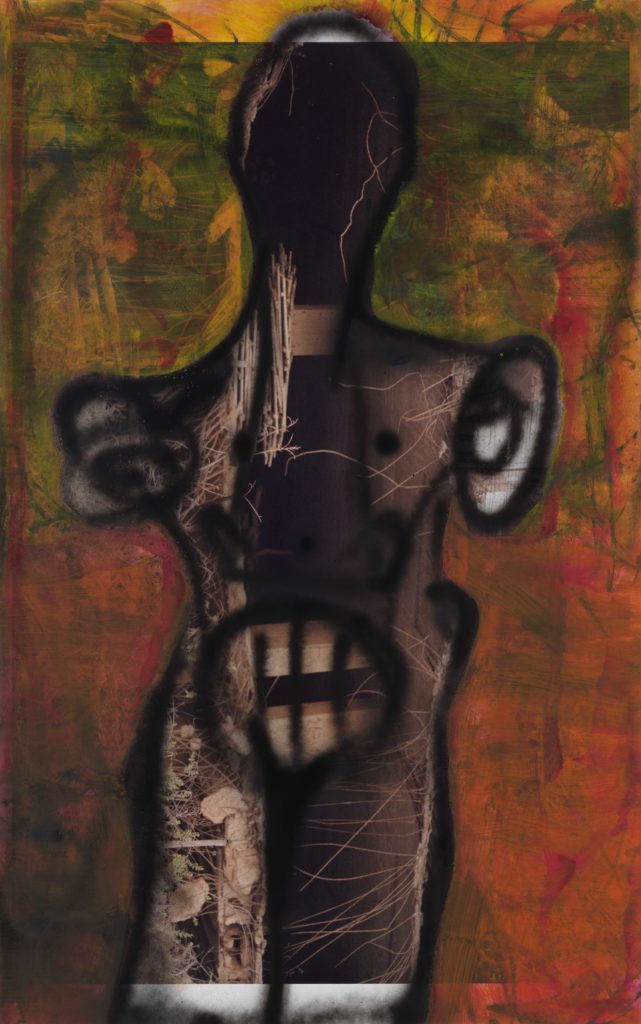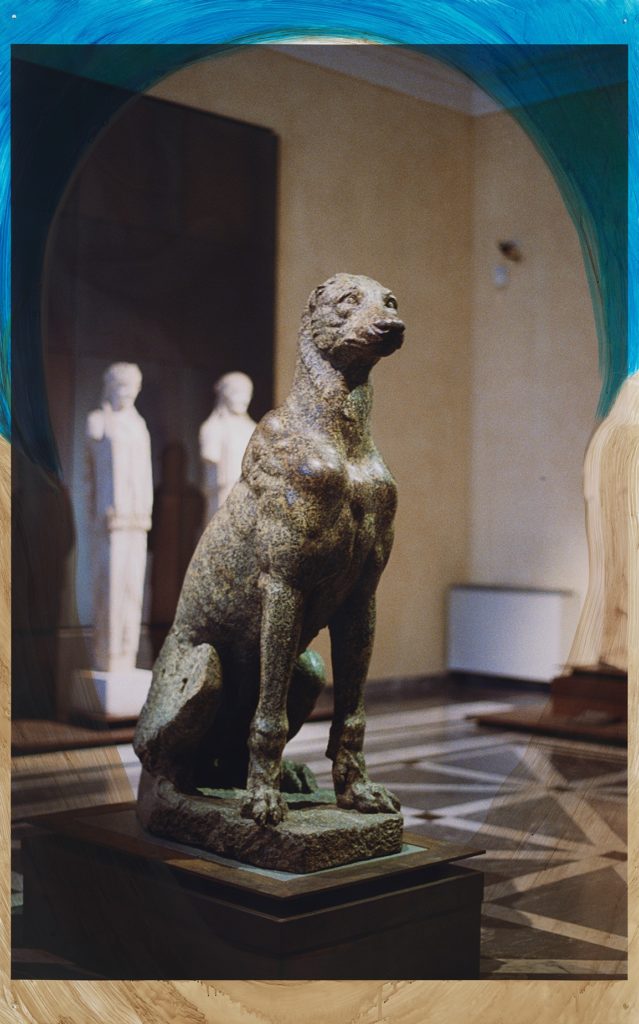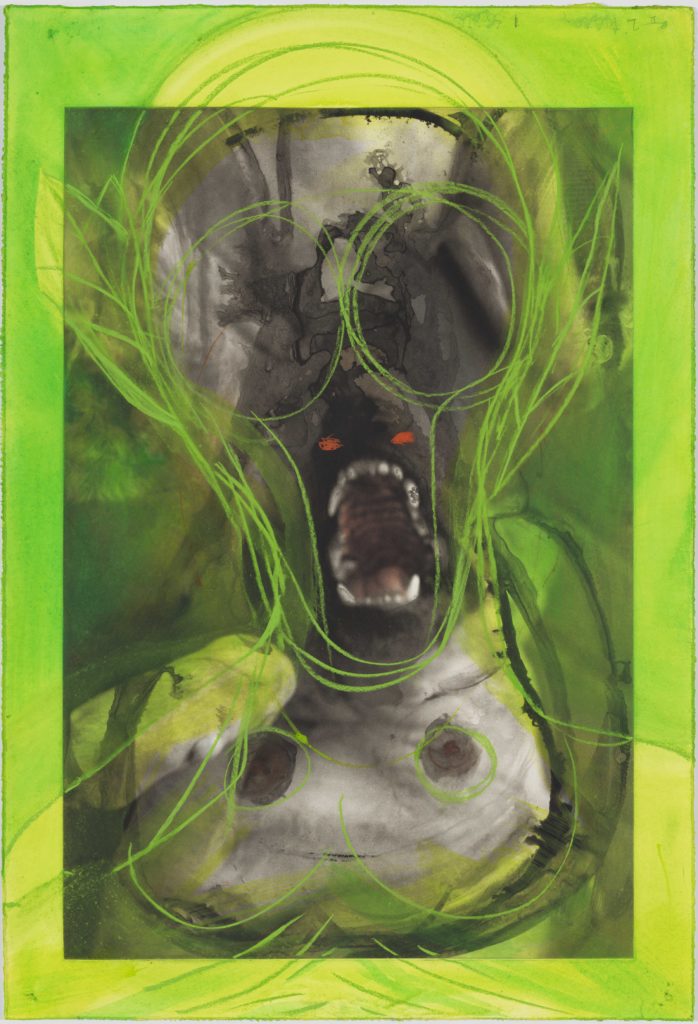Huma Bhabha
 Having spent periods between Pakistan, New York City and now Poughkeepsie, New York, Huma Bhabha’s work is all about visual things, settings and landscapes from these different places. Her artworks are a response to the world we live in today, when the global is local and globalization is the new colonialism, eternal themes because as human beings we haven’t been able to get farther them. She defines her works as “a kind of hybrid, a composite in which all the elements are recognizable and separate, but somehow make a whole.” There is nothing ironic or cynical in her choices; all the references – whether to Alberto Giacometti, pop culture, Cambodian statuary or Westermann, Philip Guston, tribal cultures and alien life forms – are sincerely made, with the goal to create pieces that look intense in their presence and aggressively make the viewer attracted by a beauty coming from the unexpected.
Having spent periods between Pakistan, New York City and now Poughkeepsie, New York, Huma Bhabha’s work is all about visual things, settings and landscapes from these different places. Her artworks are a response to the world we live in today, when the global is local and globalization is the new colonialism, eternal themes because as human beings we haven’t been able to get farther them. She defines her works as “a kind of hybrid, a composite in which all the elements are recognizable and separate, but somehow make a whole.” There is nothing ironic or cynical in her choices; all the references – whether to Alberto Giacometti, pop culture, Cambodian statuary or Westermann, Philip Guston, tribal cultures and alien life forms – are sincerely made, with the goal to create pieces that look intense in their presence and aggressively make the viewer attracted by a beauty coming from the unexpected.
Huma Bhabha – Pakistani, born 1962 – is presenting her first exhibition in Rome, at Gagosian. The artist acknowledge grew to the peak particularly after two of her last shows in America, ‘We Come in Peace,’ the Roof Garden Commission at the Metropolitan Museum of Art in New York in 2018 and ‘They Live’ at the Institute of Contemporary Art in Boston this current year. Some key elements of her work are present in the exhibitions mentioned above. ‘We Come in Peace’ title is a line in the cult-classic movie The Day the Earth Stood Still , concerning an extraterrestrial landing in Washington D.C.. Might remind the artist herself arriving in the United States as an art student from Pakistan, who obtained a degree at the Rhode Island School of Design before earning an MFA at Columbia University.
She defines herself “from a broken place, living in a breaking world,” commenting on her childhood in a post-colonial place, her hometown of Karachi, and the war-torn world after 9/11 (she also relocated from Manhattan to Poughkeepsie in 2002). Her aesthetic reflects this fragmentation, preferring the clumsy assemblage over the monolithic. The characters on the Met’s rooftop were bronze, cast from molds of sculptures Bhabha makes in her studio using low-grade materials – carving from cork and Styrofoam, its technical counterpart. A cast is finished with a pan-gender patina and Graffiti-like marks of red, green and yellow as the colors of a Rastafarian flag. In Pakistan, the walls are used as message boards and this is another inspiration the artist takes from graffiti, like messages between the living and the dead, one way of thinking about art. In the ICA exhibition – sharing its title with a 1988 sci-fi movie directed by John Carpenter – between the sixty-two objects, dating from 1994 to 2018, it appeared a series of masks the artist made in the 1990s where is visible her propensity to use whatever at hand, also engaging addictive methods and subtractive ones in single pieces. The materials hybridity suits the conceptual mixture of forms, recalling simultaneously Indigenous objects and analog B-movies special effects. Bhabha’s sculptures can often look prehistoric and cartoony at the same time, their demonic humor relates them to her earlier masks.
For her show at Gagosian – on view through December 14 – the artist is presenting new sculptures and drawings. ‘The Company’ takes inspiration from a short story written by Jorge Luis Borges in 1941, The Lottery in Babylon . There a secret/fictional Company runs a lottery system dispensing foolish powerful rewards and punishments for the fate of its society. In Bhabha’s parade of sculptures – transparent plinths with floating atop large disembodied hands, a seated figure and several standing bodily shapes in different scale – this unseen force is perceivable.
 If the Lottery is an intensification of chance, a periodic infusion of chaos into the cosmos, then is it not appropriate that chance intervene in “every” aspect of the drawing, not just one? It is not ludicrous that chance should dictate a person’s death while the circumstances of that death — whether private or public, whether drawn out for an hour or a century — should “not” be subject to chance?
If the Lottery is an intensification of chance, a periodic infusion of chaos into the cosmos, then is it not appropriate that chance intervene in “every” aspect of the drawing, not just one? It is not ludicrous that chance should dictate a person’s death while the circumstances of that death — whether private or public, whether drawn out for an hour or a century — should “not” be subject to chance?
One scurrilously suggests that the Company ceased to exist hundreds of years ago, and that the sacred disorder of our lives is purely hereditary, traditional; another believes that the Company is eternal, and teaches that it shall endure until the last night, when the last god shall annihilate the earth. Yet another declares that the Company is omnipotent, but affects only small things: the cry of a bird, the shades of rust and dust, the half dreams that come at dawn. Another, whispered by masked heresiarchs, says that “the Company has never existed, and never will.” Another, no less despicable, argues that it makes no difference whether one affirms or denies the reality of the shadowy corporation, because Babylon is nothing but an infinite game of chance.*
*Excerpt from Jorge Luis Borges. Collected Fictions. tr. Andrew Hurley. New York: Penguin Putnam, 1998. Pp. 101-106
 In Bhabha’s universe the apocalypse is now and maybe has always been. Starting from painting, Huma Bhabha asserts she was not dissatisfied, instead she “felt the work leaving the wall gradually, and coming out to the floor” so she was realizing “why not just have it stand up?” The artist’s attentiveness has been defined at odds with the material instability of the final product. Nothing feels rushed or thoughtless, yet her sculptures beaten, burned and frail nonetheless feel doomed. Bhabha also claims that one of her principal concerns is ensuring her works won’t fall over; in fact they stand erect like animated beings, not just occupying our space but sharing our historic, political, and artistic conundrums, reflections of and witnesses to human pride and power, veneration and iconoclasm.
In Bhabha’s universe the apocalypse is now and maybe has always been. Starting from painting, Huma Bhabha asserts she was not dissatisfied, instead she “felt the work leaving the wall gradually, and coming out to the floor” so she was realizing “why not just have it stand up?” The artist’s attentiveness has been defined at odds with the material instability of the final product. Nothing feels rushed or thoughtless, yet her sculptures beaten, burned and frail nonetheless feel doomed. Bhabha also claims that one of her principal concerns is ensuring her works won’t fall over; in fact they stand erect like animated beings, not just occupying our space but sharing our historic, political, and artistic conundrums, reflections of and witnesses to human pride and power, veneration and iconoclasm.
The large drawings on photographs echo these human and nonhuman forms and characters, imaginatively coming from a distant realm of the future or from a lost civilization. A photograph of a dog statue with two white kouroi looming in the background was taken by Bhabha herself in Rome’s Musei Capitolini. The ancient Greek free-standing sculptures are a recurrent reference in the artist’s work. They represent nude male youths (in Ancient Greek kouros means “youth, boy, especially of noble rank”) but the concept that is crucial for her is the feet of kouroi moving forward, a simple step that signified movement and major advance for figurative sculpture. The history of the Capitoline Museums can be traced from 1471, when Pope Sixtus IV donated a collection of important bronzes to the people of Rome. The collection has grown since then, including a large number of ancient Roman statues. The museums are located in Piazza del Campidoglio, on top of the Capitoline Hill, facing the central trapezoidal piazza conceived by Michelangelo in 1536.
The seated figure in the exhibition, looking like an enthroned pharaoh or a stricken cyborg, is assembled from clay pressed into chicken wire, variegated fragments of Styrofoam, toy dog bones and chairs from Karachi. In the extended Pakistani port city, garbage pickers used to steal household cast-offs that could be later sold and recycled. The artist’s practice to assemble discards today is a reminiscence of that.
Huma Bhabha’s characters seem survived witnesses to a catastrophe. As film and television play a role in the artist’s work, mind goes to Dark — the contemporary German mystery-drama, a Netflix original series created by Baran bo Odar and Jantje Friese, presenting an intricate puzzle filled with twists that involves a web of curious characters. The story includes supernatural elements that tie the small town of Winden to its past, and its future… There is a kind of link between Dark and Philip K. Dick’s novels, inspirational for the artist, where the mash-up of past and present looks like the kind of future he described. Bhabha defines this not just as a way of fantasizing, but as a way of thinking. Are not we all attempting to find solutions while diving into this jumbled times? Stopping by the Italian branch of Gagosian this fall can surely leave us energized and, in a inexplicable way, also more disentangled.

